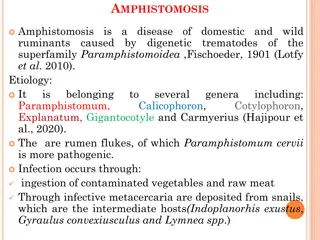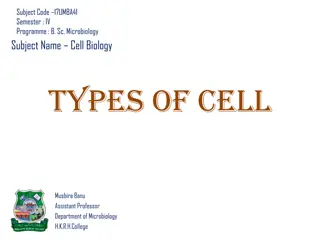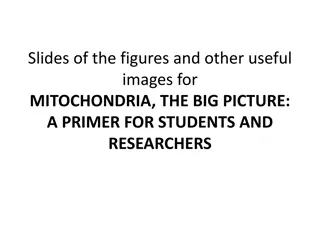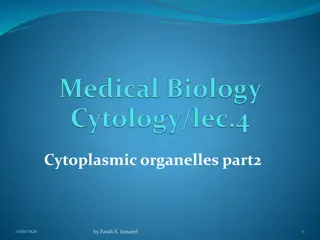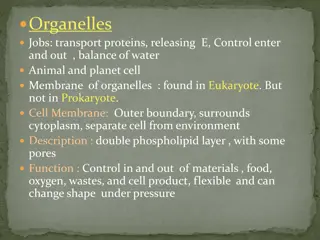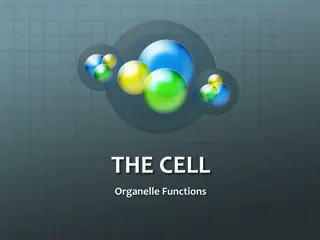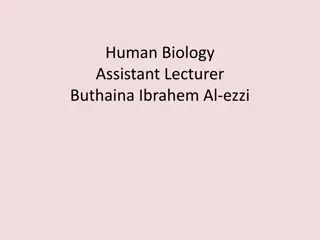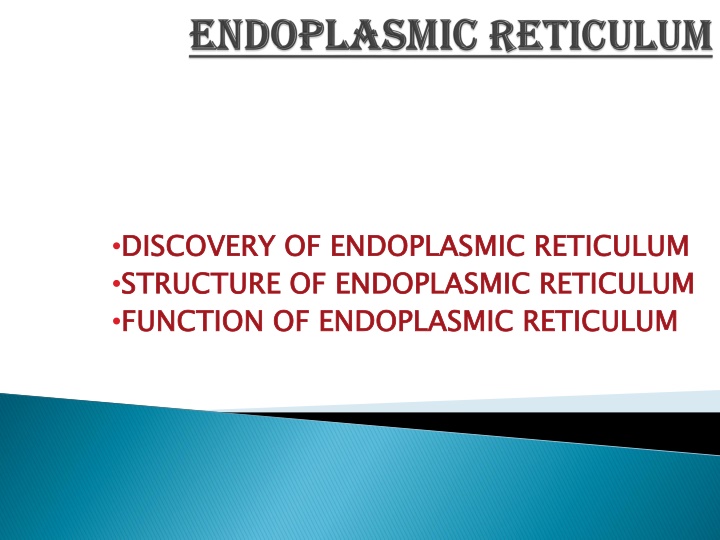
Structure and Functions of Endoplasmic Reticulum in Eukaryotic Cells
The endoplasmic reticulum (ER) is a crucial compartment in eukaryotic cells responsible for various essential functions such as protein synthesis, lipid compartmentalization, calcium storage, and intracellular signaling. Discovered by Keith Porter, the ER consists of cisternae, vesicles, and tubules and plays a significant role in membrane biogenesis and providing mechanical support to the cell. Explore the intricacies of ER structure and functions within cells.
Download Presentation

Please find below an Image/Link to download the presentation.
The content on the website is provided AS IS for your information and personal use only. It may not be sold, licensed, or shared on other websites without obtaining consent from the author. If you encounter any issues during the download, it is possible that the publisher has removed the file from their server.
You are allowed to download the files provided on this website for personal or commercial use, subject to the condition that they are used lawfully. All files are the property of their respective owners.
The content on the website is provided AS IS for your information and personal use only. It may not be sold, licensed, or shared on other websites without obtaining consent from the author.
E N D
Presentation Transcript
DISCOVERY OF ENDOPLASMIC RETICULUM STRUCTURE OF ENDOPLASMIC RETICULUM FUNCTION OF ENDOPLASMIC RETICULUM DISCOVERY OF ENDOPLASMIC RETICULUM STRUCTURE OF ENDOPLASMIC RETICULUM FUNCTION OF ENDOPLASMIC RETICULUM
The endoplasmic reticulum (ER) is the largest cell membrane- described compartment within eukaryotic cells. The ER is the main site for many essential cellular functions, including protein synthesis and processing, lipid compartmentalization of the nucleus, calcium storage and release, compound, lipid transfer and signaling to other organelles. intracellular synthesis, detoxification of
The first word endoplasmic (endo=inside) means that this organelle is contained within the cytoplasm of a eukaryotic cell. The second word reticulum means that this is a type of network that is a spread within the cell cytoplasm . Keith Porter Keith Porter named it as Endoplasmic Reticulum. Reticulum. endoplasmic Endoplasmic
Cisternae : Cisternae : Cisternae are long unbranched flattened sac-like structure with a narrow lumen. Their lumen ranges from 40 to 50 micrometers. Cisternae are parallel to each other and are interconnected with each other to form a network. They are also known as ergastoplasmic sacs ergastoplasmic sacs as they produce granular substances.
Vesicles : Vesicles : Vesicles are oval or rounded sacs of 25 -500 nm diameter. They also have ribosomes on their surface and usually remain close to the cisternae. Tubules : Tubules : The tubules are small ,smooth- walled, branched tubular spaces. Their surface is free from ribosomes and is formed from cisternae when cisternae lose their ribosomes. Their lumen ranges from 50 to 100 micrometers. All the elements of ER freely communicated with each other and contain a fluid, called endoplasmic matrix.
ER helps in membrane biogenesis. This process refers to the formation of the cell membrane . It is widely known that the cell membrane is made up of lipids and proteins. These lipids and proteins are actually provided by the combined work of RER and SER. ER performs many mechanical functions of the cell thus providing the cell with mechanical support. The large surface of the ER helps in the exchange of various materials in the cell by diffusion and active transport.
It also helps in the circulation of substances within the cell. It is also responsible for the formation of certain cell organelles like lysosomes.


